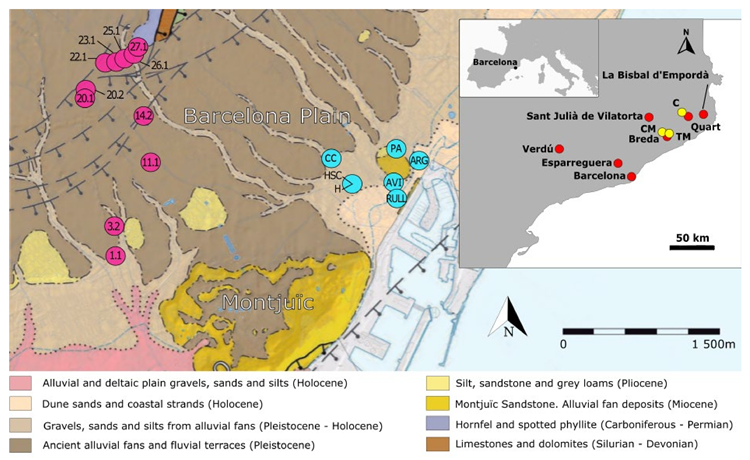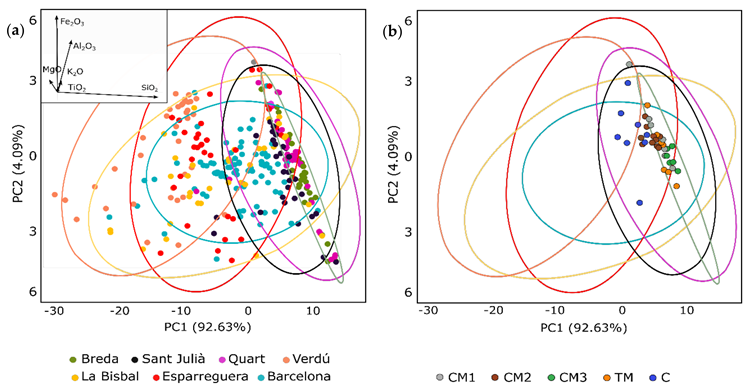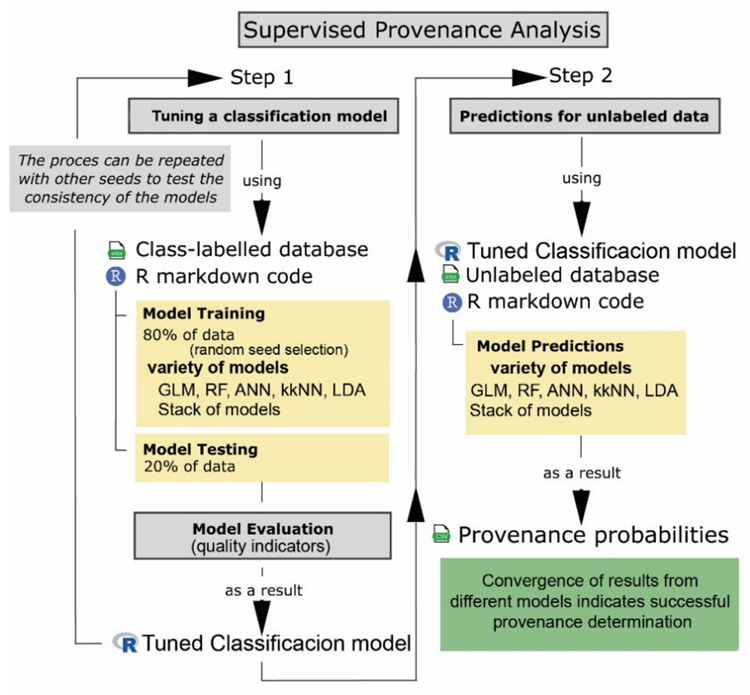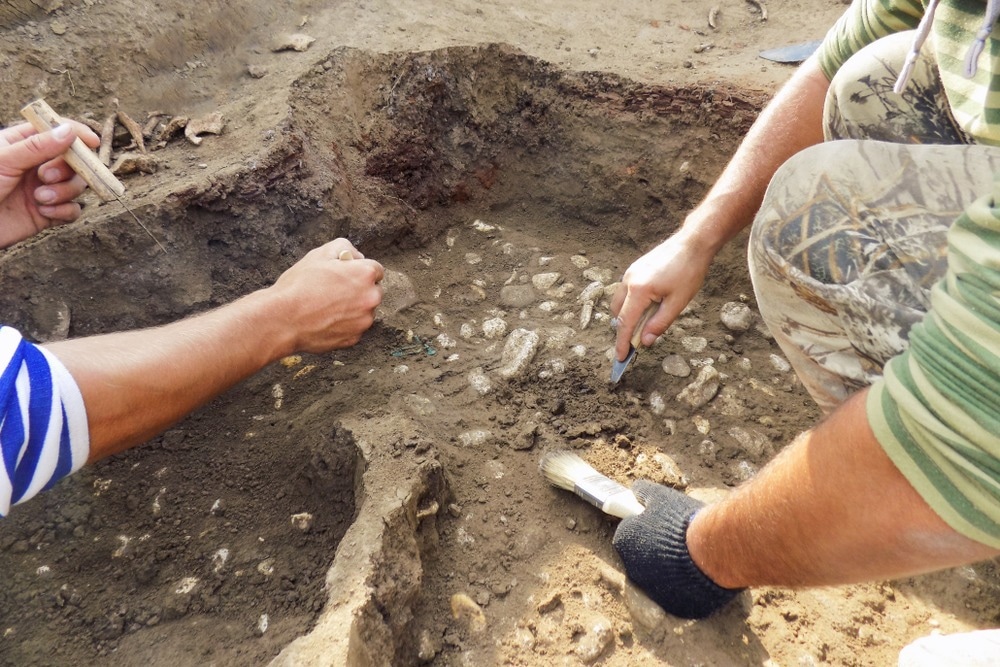Spanish scientists collaborated on new research paper published in journal sustainabilityapplies machine learning to archaeology to tackle important problems such as determining the provenance and sustainability of artifacts.
study: A supervised machine learning algorithm for predicting the provenance of archaeological pottery fragmentsImage Credit: Masarik/Shutterstock.com
Improving Archaeological Provenance and Sustainability
Archeology is an important scientific field that uncovers the secrets of the past and helps fill gaps in historical knowledge. There are still challenges that must be overcome to provide data that enhance the context of findings in the record.
A key issue in the field of archaeology concerns the provenance and sustainability of artifacts. The most common artifacts found in archaeological excavations are pottery fragments, which can provide a wealth of information such as age, evidence of cultural ties, knowledge exchange, and production techniques.
There is a whole field of archeology that investigates the physiological and geochemical analysis of artifacts, mainly pottery fragments, to uncover their provenance. Archeology is the application of scientific and technical methods in the field of archaeological research.

Geological map of clay sampling sites (pink dots) and archaeological sites (blue dots), mainly around the Sarrià-Sant Gervasi and Ciutat Vella districts. The geological base map has been changed from ICGC. The upper right corner shows a geographical map with the location of each characterized production center (red dots) and the location of the three archaeological sites investigated (yellow dots). Image credit: Anglisano, A et al., Sustainability
Sustainability issues
Archaeological discoveries occur not only in the context of the period from which they originate, but also in the context of the modern world and the historical periods in between. Activities such as agriculture, construction and urbanization complicate the question of origin and sustainability of archaeological excavations and data.
Moreover, the development of new approaches, analytical techniques, and digital tools has led to an exponential growth in datasets. While this is not normally an issue in other areas of human activity, in archaeology it complicates the economic sustainability of this area.
Pathways to greater archaeological sustainability include promoting data standardization, open data, data sharing, and data reuse. Facilitating these approaches can minimize the amount of analysis required during archaeological and archaeological analysis.
current approach
Provenance research requires the definition of reference groups. However, the reference samples essential to these studies are rarely used by different authors in the field of archaeology. Common approaches for obtaining information about artifacts include petrochemical and chemical methods, or a combination of both. They are used both for individual studies and for multiple investigations by research groups.
Large datasets are generated using methods such as neutron activation analysis and X-ray fluorescence. Processing these large datasets usually requires the application of statistical techniques.
Traditional statistical analysis techniques include hierarchical clustering and principal component analysis, or unsupervised clustering techniques. Other types of analytical data such as shard profiles, colors, and X-ray diffraction can be processed using these unsupervised methods.
However, these unsupervised methods cannot easily distinguish between classes of data corresponding to provenance sites that share similar features. A key issue is that the data are not labeled prior to classification. In contrast, the supervised method is a more powerful and suitable approach. The main advantages of these methods are the ability to learn from training datasets and better knowledge of the provenance of reference samples.

(a) PCA biplots of factor scores for the first two principal components of all reference samples. Ellipses of 95% confidence were drawn for all classes. Inset: PCA biplot of the most relevant variables. (b) locations of samples of unknown origin within the PCA biplot with confidence ellipses preserved. Image credit: Anglisano, A et al., Sustainability
the study
new paper in sustainability We have explored ways to use machine learning to improve our knowledge of provenance and increase sustainability as a result of archaeological research. Machine learning is a rapidly growing area of scientific endeavor increasingly employed in archeology.
Deep learning approaches, especially deep convolutional networks, have improved their accuracy in analyzing images and recognizing patterns. These approaches have already been applied to remote sensing for line-of-sight and artifact classification. Classification criteria in these approaches include pottery shard morphology and engraving.
This paper demonstrates the suitability of machine learning techniques for providing important provenance information on pottery fragments using chemical analysis. The study used chemical datasets from his six sites in Spain. These reference datasets were extended to the Barcelona site that produced the pottery shards.
A discriminative model was trained and optimized to provide accurate provenance information on pottery samples from the Catalan region of Spain. Additionally, trained machine learning models can be applied to other sites within the same region. The main purpose of this study was to evaluate how supervised models outperform unsupervised approaches.
Another focus of this work was to extend the supervised clustering algorithm approach to provide enhanced provenance capabilities to the field of archaeology. This will help the archaeological community easily implement these machine learning-based approaches and move away from traditional unsupervised methods.

Schematic of the two-step process (model tuning and prediction) of performing a “supervised provenance analysis” using R code to generate provenance probabilities for samples of unknown provenance. Image credit: Anglisano, A et al., Sustainability
This study showed that the accuracy of the supervised model is acceptable. The authors recommend that using a large number of reference samples while providing improved algorithm training would be an unsustainable approach. is recommended.
In the long run, the presented approach, when generalized, could reduce the number of analyzes required to provide accurate provenance information for artifacts such as pottery shards. Once a thorough reference record is achieved for a particular area, archaeologists need only analyze unknown samples without the need for reference samples. This will improve the sustainability of archaeological research.
References
Anglisano, A. et al. (2022) A Supervised Machine Learning Algorithm to Predict the Provenance of Archaeological Pottery Fragments sustainability 14(18) 11214 [online] Available at: mdpi.com. https://www.mdpi.com/2071-1050/14/18/11214


